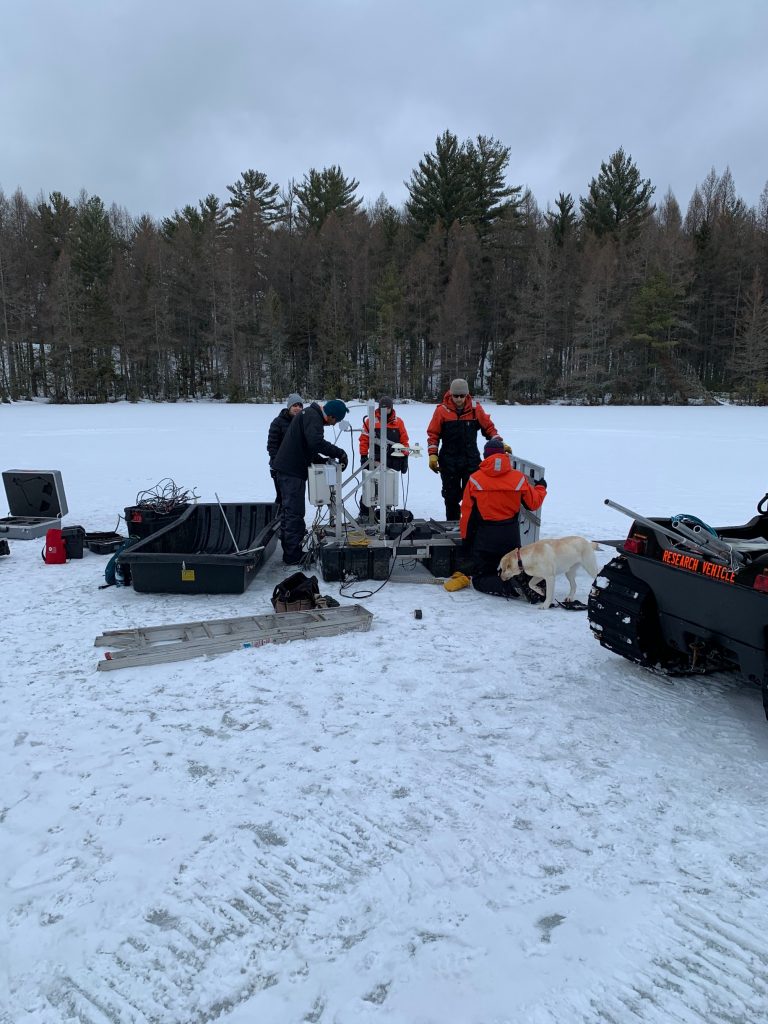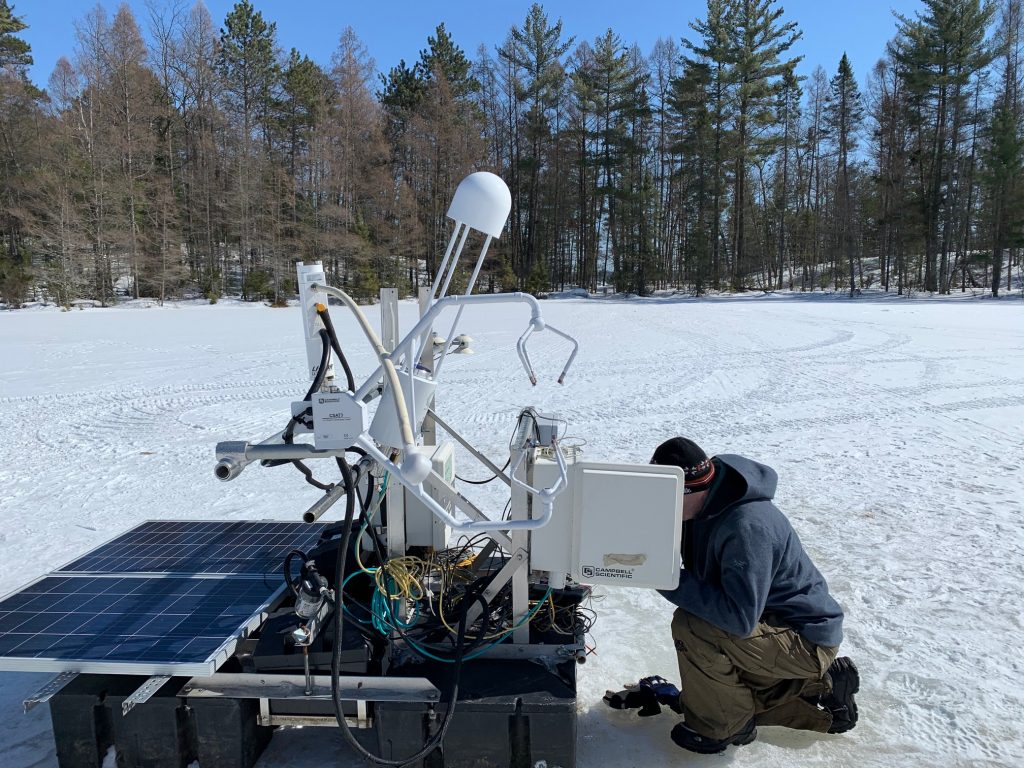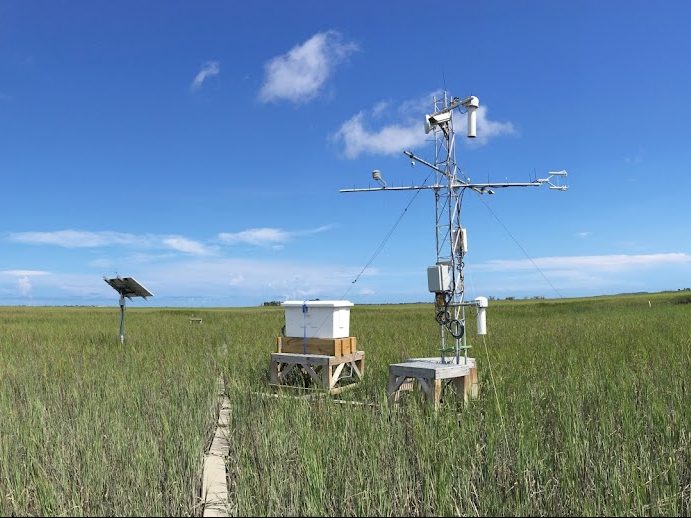Spring is a glorious time for biogeochemistry. Trees are budding; flowers are blooming; and ecologists around the world are itching to collect observations of the natural environment (while keeping our social distance).
The entire landscape is changing. The ice that covered lakes, ponds, and wetlands across much of the temperate and boreal climate zones is melting, removing a barrier that kept most of the winter buildup of carbon dioxide and methane from entering the atmosphere. During the melt period, greenhouse gas fluxes may be particularly pronounced in smaller lakes and bogs that receive ample carbon from the surrounding watershed and whose littoral zones make up a larger percentage of their area than larger and deeper lakes. Because measuring such fluxes directly atop melting ice usually runs afoul of work safety regulations, a knowledge gap exists about the magnitude and timing of greenhouse gas fluxes from many water bodies. Once again, eddy covariance comes to the rescue!
To capture the spring release of greenhouse gasses from bog lakes, a team of intrepid UW-Madison researchers installed eddy covariance buoys on two frozen bog lakes in northern Wisconsin in March. These buoys provided under the loaner instrument program (LI-7700) by the AmeriFlux Management Project for the AmeriFlux Year of Methane are continually measuring carbon dioxide and methane fluxes and will continue doing so as ice melts and as the buoys settle into their summer home on the open water.
The bog lakes are part of a unique global change experiment. Trout Bog (US-TrB) is a core study lake of the North Temperate Lakes Long Term Ecological Research Site (https://lter.limnology.wisc.edu/researchsite/trout-bog) and has been monitored regularly since 1980. The site of an experimental snow removal project, the nearby South Sparkling Bog (US-TrS) was plowed by the UW Center for Limnology Argo every time snow fell during the winter of 2019/20.
Why was South Sparking Bog plowed? We all know that the timing of lake melt changes as the climate warms. However, corresponding declines in snow cover can make water bodies colder in winter as they lose the thermal insulation provided by snow, and brighter as more light penetrates the ice cover. These physical changes to the water body environment have important consequences for water body chemistry and biology that remain poorly understood. By simulating the conditions of a low-snow winter, the impacts of precipitation changes on bog lake biogeochemistry can be studied. Initial results demonstrate large pools of methane and carbon dioxide below the ice of both bog lakes, and the ongoing eddy covariance measurements will help constrain the timing and magnitude of their flux to the atmosphere.
Data will be made available to the public on ameriflux.lbl.gov upon completion of the measurements in September 2020, and will complement ongoing AmeriFlux and NEON supported eddy covariance measurement studies in northern Wisconsin and Michigan wetlands (US-Los, US-ALQ) and forests (US-WCr, US-Syv, US-xUN) and NSF-supported measurements from the CHEESEHEAD2019 (US-PFa) experiment (PI: Ankur Desai). We are excited to contribute these measurements to the growing methane flux database. Here’s to the Year of Methane becoming the Decade of Methane.

The team (from left: Anam Khan, Ankur Desai, Adrianna Gorsky, Paul Schramm, Hilary Dugan, Gale Force the Yellow Lab, and the Argo) start piecing together the buoy on Trout Bog (US-TrB).
Paul Stoy, Hilary Dugan, and Ankur Desai (all at University of Wisconsin) authored this post for the AmeriFlux Year of Methane.





No Comments
Be the first to start a conversation